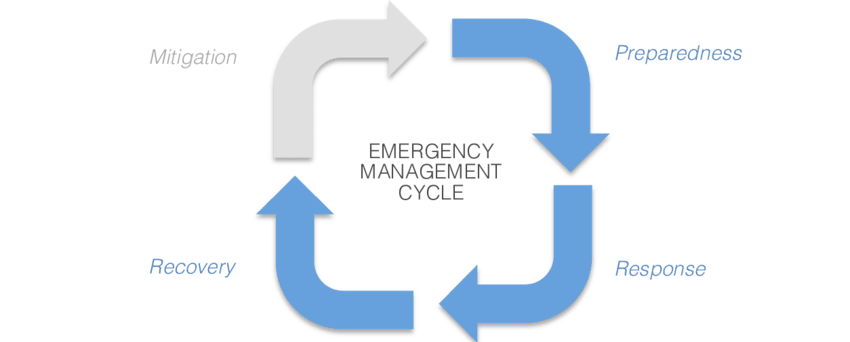
Aspiring Emergency Managers Online
- Job Board
- Events
- …
- Job Board
- Events
Aspiring Emergency Managers Online
- Job Board
- Events
- …
- Job Board
- Events
What is Emergency Management?

Emergency management is a coordinated, all-hazards approach to preparing for, responding to, mitigating, and recovering from disasters and emergencies. It involves the strategic planning and integration of resources, policies, and actions to protect communities, infrastructure, and the environment from a wide range of threats, including natural disasters, technological incidents, and human-caused events.
Core Phases of Emergency Management
Emergency management operates through four interrelated phases:
Mitigation: Implementing measures to reduce or eliminate the long-term risk to people and property from hazards and their effects. This includes activities like hazard mapping, land-use planning, and structural improvements.
Preparedness: Establishing plans, procedures, and systems to ensure an effective response to emergencies. This phase encompasses training, exercises, public education, and the development of emergency operations plans.
Response: Mobilizing resources and coordinating efforts to address the immediate needs resulting from an emergency. This includes actions such as search and rescue, medical care, and the provision of shelter and food.
Recovery: Restoring and revitalizing affected communities and systems to return to normal or improved conditions. Recovery efforts involve rebuilding infrastructure, providing economic support, and addressing long-term health and social needs.
Guiding Frameworks and Standards
Emergency management is guided by several key frameworks and standards:
National Response Framework (NRF): A guide to how the nation responds to all types of disasters and emergencies, focusing on coordination among all levels of government, the private sector, and non-governmental organizations. It emphasizes the importance of community lifelines and scalable, flexible, and adaptable response strategies. FEMA
National Incident Management System (NIMS): Provides a standardized approach to incident management, promoting interoperability and coordination among responders. NIMS outlines organizational structures, processes, and procedures to ensure effective and efficient incident response. FEMA
National Preparedness Goal: Defines the capabilities required across the whole community to prevent, protect against, mitigate, respond to, and recover from the threats and hazards that pose the greatest risk. It outlines five mission areas—Prevention, Protection, Mitigation, Response, and Recovery—and 32 core capabilities. FEMA
Professional Development and Education
Emergency management is a dynamic field requiring continuous learning and professional development. Organizations like the Federal Emergency Management Agency (FEMA) offer training through the Emergency Management Institute (EMI), providing courses and certifications to enhance the skills and knowledge of emergency management professionals. FEMA NDEMU

501(c)(3)
Aspiring Emergency Managers Online is registered as a 501(c)(3) non-profit organization.
Contact Us
General Questions contact@
❤️This website was designed by the labor and love throughout the Emergency Management Community.
© 2024 Aspiring Emergency Managers Online (AEMO). All rights reserved. Empowering the next generation of emergency management professionals.
Terms & Conditions
Privacy Policy

